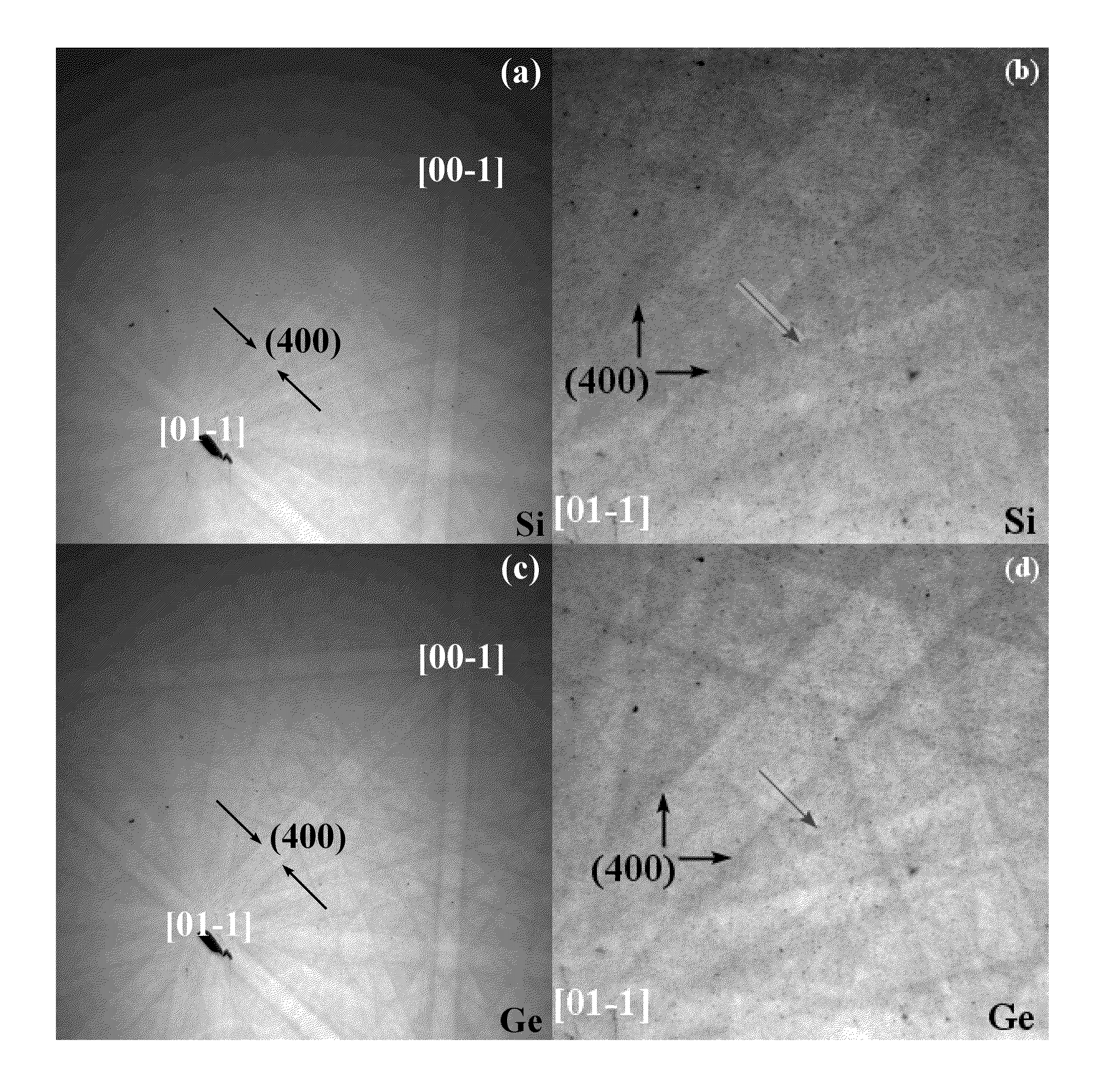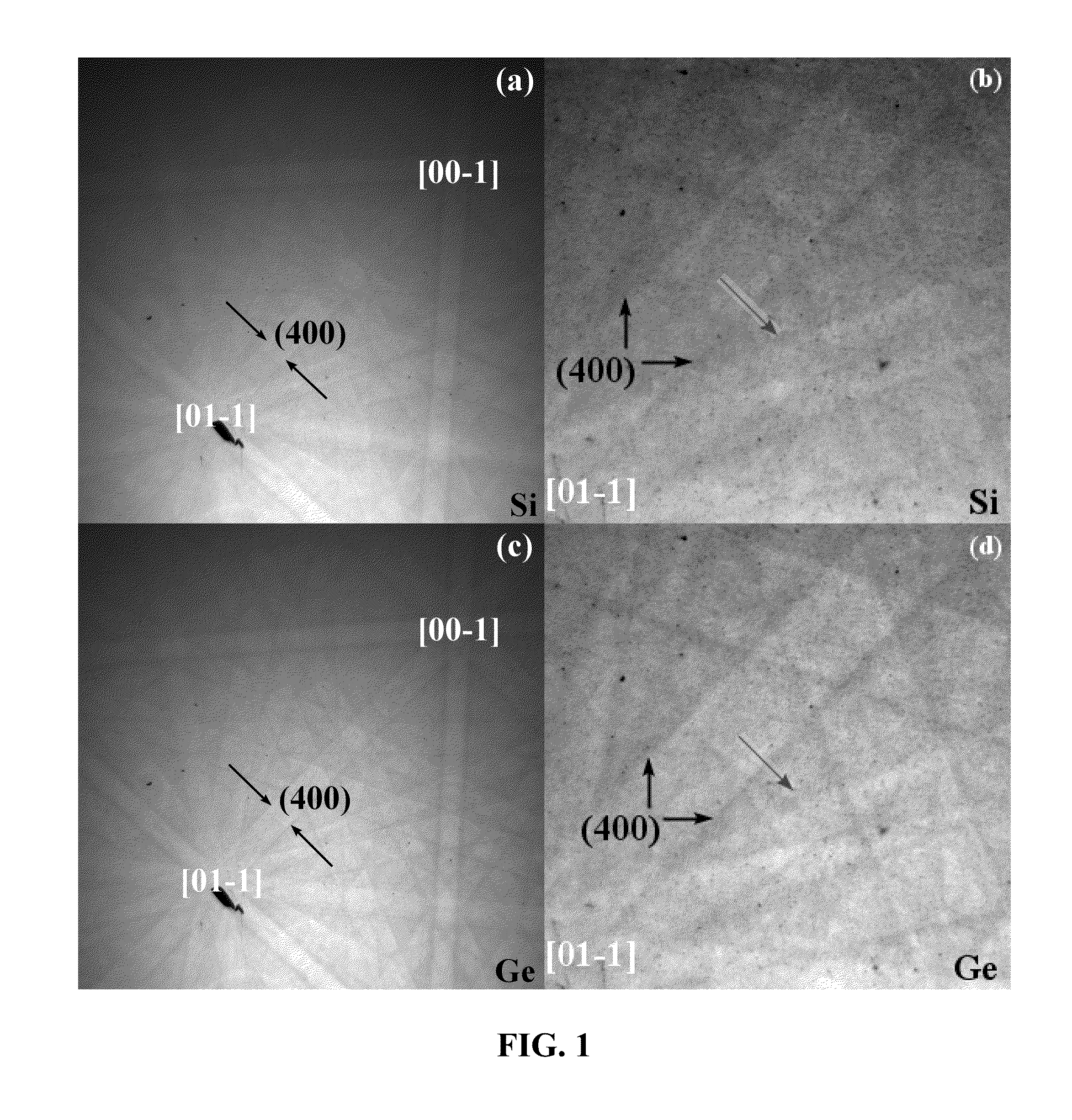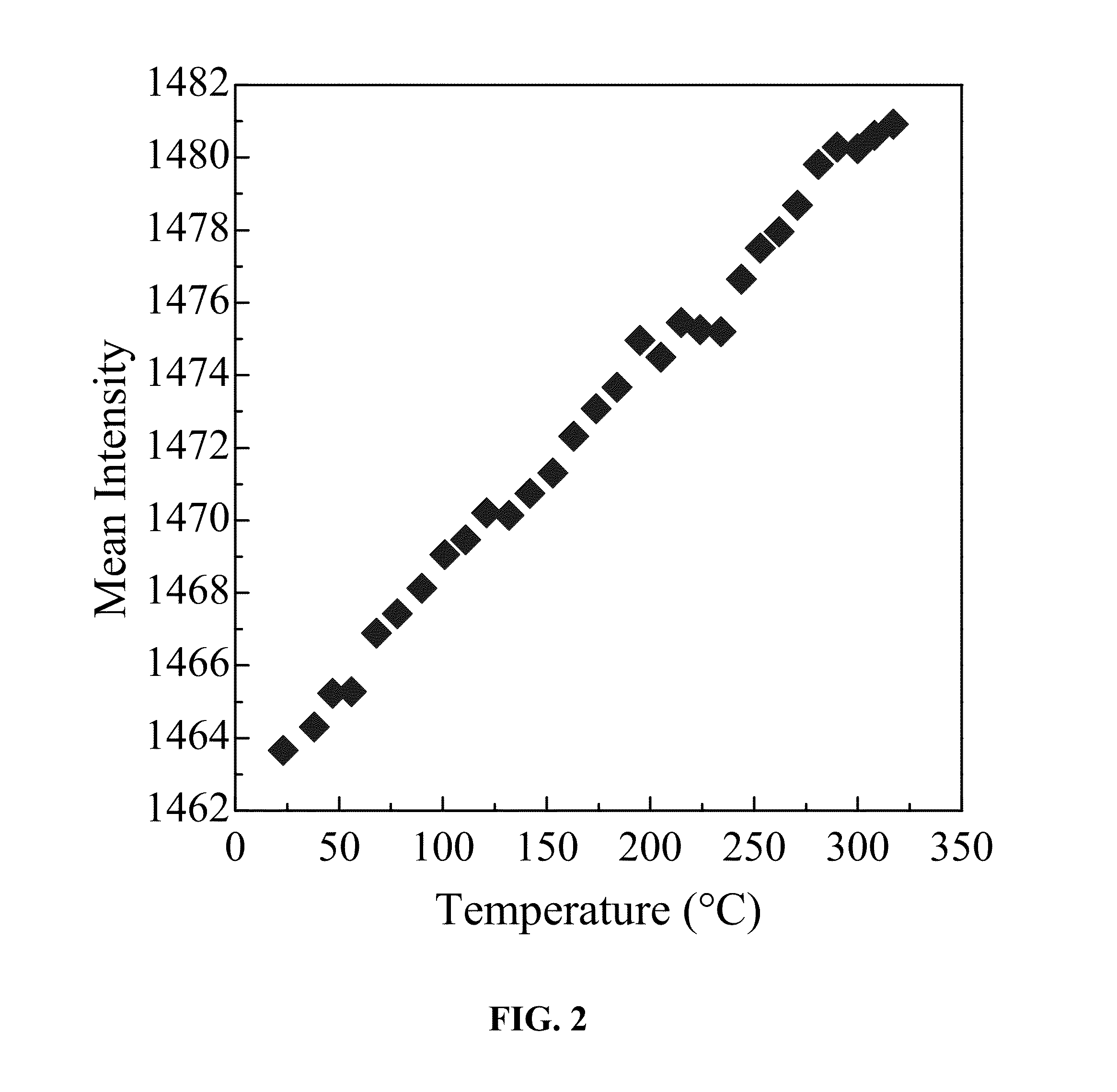High spatial resolution non-contact temperature measurement
- Summary
- Abstract
- Description
- Claims
- Application Information
AI Technical Summary
Benefits of technology
Problems solved by technology
Method used
Image
Examples
example 1
[0089]The EBSD data were obtained using a JEOL JEM 840 SEM with a custom-made heating stage from Ernest F. Fullam, Inc and an Oxford Instrument Nordlys II EBSD system. A two-step electron scattering process, consisting of incoherent scattering of incident beam electron followed by elastic and coherent scattering of these electrons, was performed to form EBSD Kikuchi patterns. The sample used for EBSD pattern collection at different temperatures was a single crystal {100} silicon wafer. The sample was mounted onto the hot stage in the SEM chamber using silver paint and the hot stage was tilted to 70° for EBSD collection. A K-type thermocouple was attached to the sample surface to provide an absolute calibration temperature. The hot stage and samples were then heated from room temperature to 400° C. and cooled back to room temperature very slowly to ensure that the temperature was close to uniform for each measurement. EBSD patterns at different temperatures were collected with the el...
example 2
[0112]In order to compare the effects of the above three material dependent factors experimentally, all other relevant factors should be precisely controlled. This requires materials for comparison which differ only in the above factors with all other parameters (especially those relevant to electron diffraction) the same or at least very close to each other. Single crystal Si and Ge {100} samples can be selected for these experiments due to the availability of pure and crysto-graphically perfect samples, their similar electron diffraction related material properties (e.g., the same crysto-graphic structure), but different B-factor sensitivities, atomic numbers, and lattice constants (i.e., the effects of the three factors to be compared).
[0113]ThSEM temperature measurements were performed on single crystal silicon {100} and germanium {100} samples. These samples were selected for due to the availability of pure and crysto-graphically perfect (or nearly perfect) samples, their simil...
PUM
 Login to View More
Login to View More Abstract
Description
Claims
Application Information
 Login to View More
Login to View More - R&D
- Intellectual Property
- Life Sciences
- Materials
- Tech Scout
- Unparalleled Data Quality
- Higher Quality Content
- 60% Fewer Hallucinations
Browse by: Latest US Patents, China's latest patents, Technical Efficacy Thesaurus, Application Domain, Technology Topic, Popular Technical Reports.
© 2025 PatSnap. All rights reserved.Legal|Privacy policy|Modern Slavery Act Transparency Statement|Sitemap|About US| Contact US: help@patsnap.com



